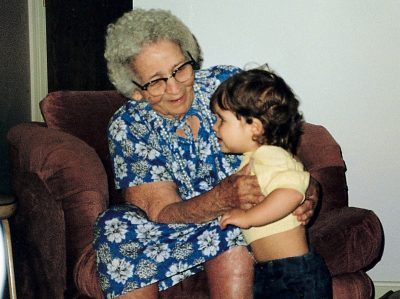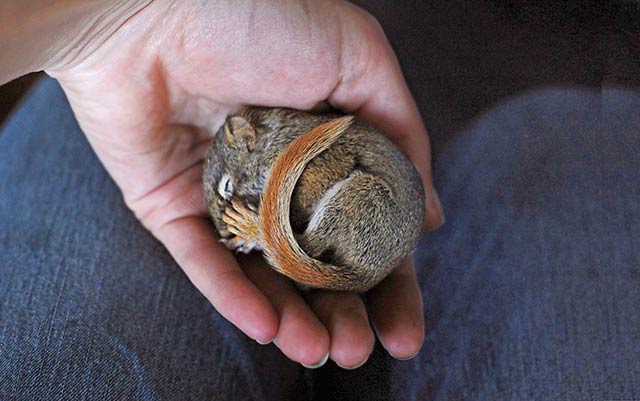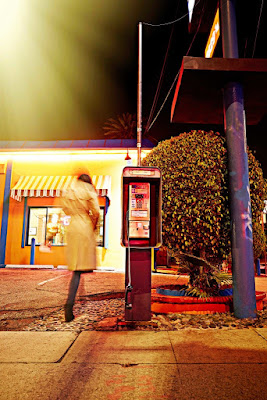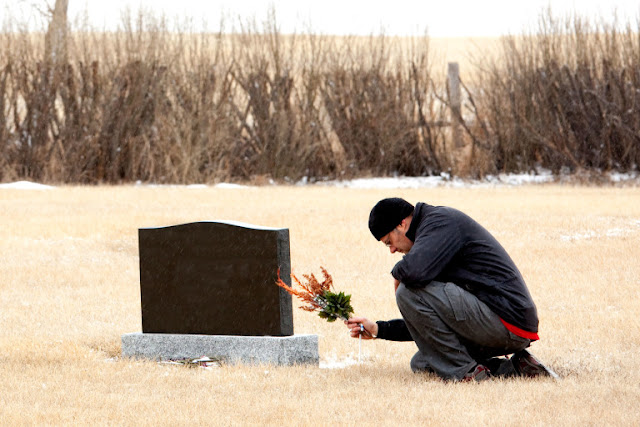For 15 years, Anne McDonnell lived in limbo—not knowing whether her Jim was dead or alive. Then one afternoon the doorbell rang.
The McDonnells lived in a small brick house in Larchmont, a suburb of New York City. Jim was foreman of mail carriers at the post office where he had worked for 25 years. A gentle, soft-spoken man, he had a wave of the hand acquaintance with hundreds of people in town. Married in 1960, he and Anne were childless.
During February and March 1971, when he was 50, Jim McDonnell suffered a curious series of accidents. None was critical in itself, but the combination appeared to trigger a strange result.
Carrying out the garbage one evening, he slipped on ice-coated steps, bruised his back and struck his head. A few days later, driving to work, he had a fit of sneezing, lost control of the car, hit a telephone pole and banged his forehead against the windshield. The following day a dizzy spell at work sent him tumbling down a flight of steps, and again he banged his head. Ten days later he again lost control of his car and hit a pole. Found unconscious, he was hospitalized for three days with a cerebral concussion.
On March 29, 1971, Jim borrowed a friend’s station wagon and drove to Kennedy Airport to pick up Anne’s brother and family. Then he took them to Anne’s sister’s house. When he returned the borrowed car at 10 p.m., he was unaware that the leather folder containing his identification had slipped out of his pocket onto the floor of the station wagon. Jim declined the offer of a ride home: “I have a terrible headache and the walk will help clear my head.” Ordinarily the walk would have taken about 15 minutes.
At 11:15 p.m. Anne called the owner of the station wagon; he had no idea why Jim had not yet reached home. It was unlike Jim not to telephone if he was delayed. At 2 a.m., Anne called the police and reported her husband missing.
After 24 hours, the police sent out an all-points bulletin and began writing some 50 letters to Jim’s friends and relatives. They followed through on every anonymous tip and even checked unidentified bodies in New York morgues.
Detective George Mulcahy was assigned to head the investigation. He knew Jim was a man of probity and openness—the two attended the same church—and Mulcahy was sure the disappearance had nothing to do with wrongdoing by Jim McDonnell. Investigation confirmed that McDonnell’s personal and professional records were impeccable, and turned up no tendencies toward self destruction or any evidence that he had been a victim of an accident or attack.
For Mulcahy, the only explanation was amnesia.
The phenomenon of amnesia is clouded in mystery. Why it occurs in some patients and not in others is open to medical speculation. What is known is that loss of memory can be caused by stroke, Alzheimer’s disease, alcoholism, severe psychological trauma—or by blows to the head. Any individual whose brain has suffered such injuries can simply wander aimlessly away from the place where he lives, with all knowledge of his past blacked out.
“For weeks,” Anne’s sister recalls, “Anne walked the house wringing her hands and praying. She agreed that Jim could be a victim of amnesia—and she worried about his health. Anne was sustained by her deep trust in God. She felt that one day he would provide an answer.”
Anne remained alone in the house, waiting. At night, watching television, she would stare at the overstuffed hassock where Jim had dozed off evenings. She often dreamed he had come home, only to wake up and find he wasn’t there.
Soon after Jim’s disappearance Anne realized she had to earn a living. She took babysitting jobs, was a supermarket checker and worked in a hospital cafeteria. In 1977 she took her current job as a nursing attendant.
Anne fell into the habit of working at the hospital on holidays because it was easier if she kept busy. I’ve got to go on, live as best I can, she told herself. Through it all, she had faith that Jim would return. She kept his clothes in the closet covered to protect them from dust. His razor and can of shaving cream remained in the bathroom cabinet.
During his walk home, Jim had indeed blacked out, losing all ability to remember who he was and where he lived. What happened then is unclear. He may have taken the train to Grand Central Terminal, then another train or a bus south. The next thing he knew, he was in downtown Philadelphia, a city he had never visited before.
Seeing signs advertising the services of a James Peters, a real estate broker, Jim adopted James Peters as his own name. It never occurred to him to seek assistance at a police station or hospital. He had no past; his only reality was the present.
James Peters got a Social Security card, which could be obtained at that time without showing a birth certificate, and took a job in the luncheonette of a health club. He next worked at a cancer research institute, cleaning out animal cages. He also got a nightshift job at the P&P luncheonette, where he became well known for his omelets, as well as his courtesy and good humor. After a year he felt he was established at P&P and quit his job at the cancer institute.
Jim made new friends, joined an American Legion post and the Knights of Columbus, and became an active member of the St. Hugh Roman Catholic Church.
He never talked about his past, and his friends didn’t pry. One once said to him, “From your accent, you must be from New York.”
Jim replied, “I guess so.”
To Cheryle Sloan, a waitress at P&P, Jim was special: “He loved kids. At Christmastime, he played Santa Claus at orphanages. He grew a big white beard to make his appearance more authentic. Of course we wondered about his past. My mother decided that he had to be an ex-priest or an ex-criminal.”
Bernadine Golashovsky recalls: “Soon after Jim started at P&P, I took a job there as a waitress. My father had died and Jim apparently had no family, so we adopted each other. He became my father figure, and we—my husband, Pete, our four children and I—were his family. The children loved him.”
About a month before Christmas 1985, Bernadine noticed that Jim had grown unusually quiet and subdued. Something seemed to be turning in his mind.
On Thanksgiving Day, Jim visited the family and sat watching television with Pete. A scene appeared in which a mail carrier was making deliveries on a miserably rainy day. Pete said, “Boy, that’s one job I wouldn’t want.”
Jim frowned and said, “I think I used to be a postman.”
“Really? Where?”
“I don’t know,” Jim answered.
“New York?”
“I’m not sure. But I think I remember my parents a little.”
Jim spent every major holiday with Bernadine and Pete. On Christmas Eve he always arrived late because the Golashovskys were his last stop on his rounds of wishing friends a happy holiday. On this Christmas Eve he never arrived. Bernadine and Pete stayed up all night waiting for him.
On December 22, Jim had fallen and banged his head. The next day at work he seemed distracted, and late that afternoon he had fallen again, striking his head. On December 24, he awoke feeling confused, yet elated. After almost 15 years, he knew who he was! He was James A. McDonnell, Jr., of Larchmont, New York. His wife’s name was Anne. Then, suddenly, he was scared: Is Anne alive? Has she remarried? If not, how will she greet me?
Anne had just returned home from Christmas Mass, where she lit candles and prayed for Jim. A light snow was falling, and she was in a hurry to leave for Christmas dinner at her sister’s before the roads grew slick.
Then the doorbell rang, Oh, my she thought, this is not a good time for a visitor.
Anne opened the door—and peered at a man with a full white beard. Immediately she recognized Jim. She couldn’t speak.
To Jim, Anne looked a little older, but prettier too. His heart overflowed.
“Hello, Anne,” he said.
“Jim,” she gasped. “Is it true?” Her breathing came in bursts, as if she had been running. “Oh, I’m glad you’re home. Come in, come in.” They barely touched hands. They were too stunned to fall into each other’s arms. The embraces and the tears would come later.
Anne led Jim to his favorite seat, the overstuffed hassock. They began to talk, trying to fill in the gaps in time. Finally, Jim’s eyes grew heavy. Exhausted and happy, he dozed off.
After 15 years, Jim McDonnell was home at last.
On the day after Christmas, Jim reported his return to the police. That evening the Golashovskys received a phone call from a New York Daily News reporter who told them Jim was fine. Bernadine phoned Jim’s friends with the good news.
A week after his return Jim had a complete physical, including a CAT scan of his brain. The conclusion: he was in normal health, Jim and Anne have had no problems resuming their lives as a married couple. “Each day we are together,” Jim says, “makes the time we were apart seem shorter.”

























